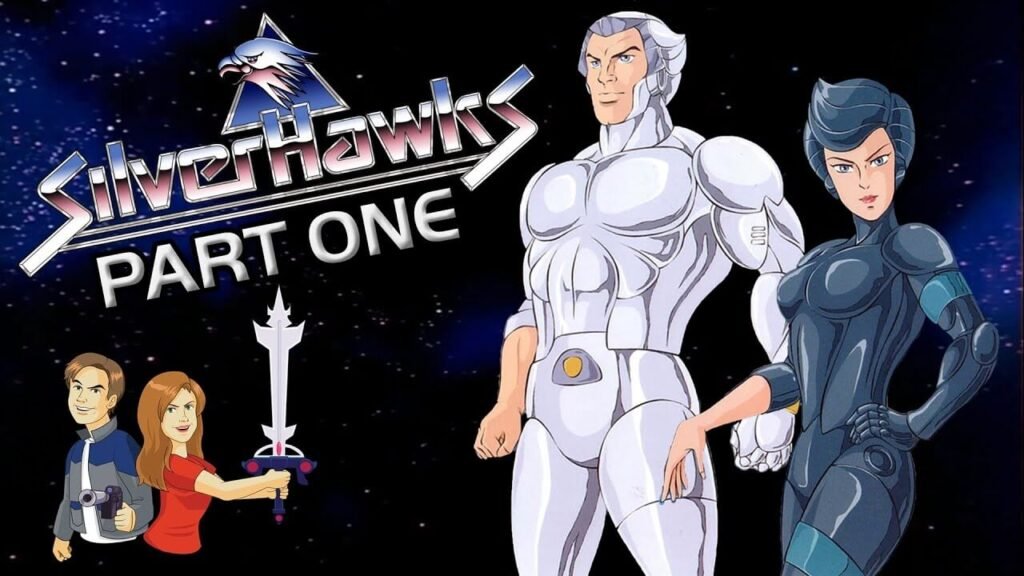For many Americans who grew up in the 1980s, the name SilverHawks instantly summons visions of gleaming metal armor, futuristic space battles, and a unique cast of heroes who were “partly metal, partly real.” SilverHawks, a distinctive animated TV series from 1986, melded science fiction with superhero action in a way that captivated young viewers then—and continues to hold nostalgic appeal today. As these metallic guardians of the Limbo Galaxy prepare for a modern revival, it’s the perfect moment to dive deeply into what makes SilverHawks an enduring icon of animated entertainment. This blog explores SilverHawks’ origins, cultural impact, and why it still resonates with American audiences decades later.
The Making of SilverHawks: Innovation in Animation and Storytelling
SilverHawks was developed by Rankin/Bass Productions, co-creators of the successful ThunderCats series, and animated by Japan’s Pacific Animation Corporation. The show consisted of 65 episodes, each following a team led by Commander Stargazer as they fought the villainous Mon*Star and his galactic mob. Unlike traditional superheroes, SilverHawks combined bionic technology with space-age adventure. The heroes donned close-fitting metal armor, featured retractable wings, laser weapons, and thrusters, blending human traits with mechanical enhancements. This futuristic approach reflected a then-novel storytelling concept: the merging of human spirit with technological prowess.
The characters themselves formed a diverse and relatable team. Quicksilver, the leader, was joined by his metal bird Tally-Hawk, forming a unique symbiotic partnership. Other key members included the strongman twins Steelheart and Steelwill, the pilot and cowboy Bluegrass, and the youngest genius, Copper Kidd, who spoke only in whistles and tones. Together, they represented themes of teamwork, courage, and resilience in the face of overwhelming odds.
SilverHawks and American Nostalgia: A Cultural Touchstone
In the panorama of American pop culture, SilverHawks holds a special place as a reflection of 1980s imaginations about the future, technology, and heroism. While it never eclipsed the popularity of ThunderCats, SilverHawks carved out its own niche with its distinct sci-fi aesthetic and serialized storytelling. Its appeal continues with adults who watched the show as kids, now sharing it with new generations.
Dynamite Entertainment’s 2025 relaunch of the SilverHawks comic series serves as a testament to the enduring popularity of these characters. The new series aims to expand on the original mythos, bringing depth to characters and backstories that older fans loved and younger readers are just discovering. Writer Ed Brisson remarked, “Modern storytelling allows us to explore the heroes not just as fighters but as complex individuals shaped by their metal and human halves.” This revival underscores how SilverHawks has managed to transcend time, melding nostalgia with fresh narratives that appeal broadly to American audiences.
Scientific and Technological Themes in SilverHawks
One of the unique aspects of SilverHawks is its embedding of scientific imagination and technological curiosity—an early exploration of what would later be associated with cyborg and bionic concepts. The characters’ bionic bodies, equipped with armor and weaponry, mirrored contemporary interests in the possibilities and ethical questions of human-machine integration.
Academic research on sci-fi media from the 1980s notes that SilverHawks stood out for presenting technology as a force for good, portraying the balance between man and machine rather than dystopian fears. This theme resonates in the American cultural context where technological innovation often embodies hope and challenge alike. Moreover, SilverHawks engaged with space exploration enthusiasm, capitalizing on public fascination that followed decades of NASA missions and sci-fi media popularity.
Why SilverHawks Matters Today: Lessons and Legacy
SilverHawks’ legacy is multifaceted. It represents a pioneering blend of animation techniques, storytelling, and character design. Moreover, it offers enduring lessons about identity, teamwork, and the fusion of human and technological strengths. In today’s landscape, where technology is deeply interwoven with daily life, SilverHawks’ narrative remains relevant by reflecting on how humans interact with machines and each other.
For American audiences, SilverHawks offers a window into 1980s optimism about the future, packaged in engaging tales of heroism and camaraderie. The series’ recent revival ensures that these themes continue to inspire, suggesting that as long as there are stars to explore and villains to thwart, SilverHawks will keep soaring.
Conclusion: Soaring Forward with SilverHawks
SilverHawks is more than just an iconic 1980s animated series; it is a cultural landmark that continues to inspire American audiences through its fusion of heroism, technology, and space adventure. Having been reborn for a new generation, its stories echo timeless themes of courage, identity, and innovation. For those who remember the glint of metallic wings under alien skies, and for new fans discovering the thrill of space enforcers, SilverHawks remains a shining symbol of imagination that never fades.
you may also like
Style Savvy: Unlocking Your Personal Fashion Identity for the American Audience
